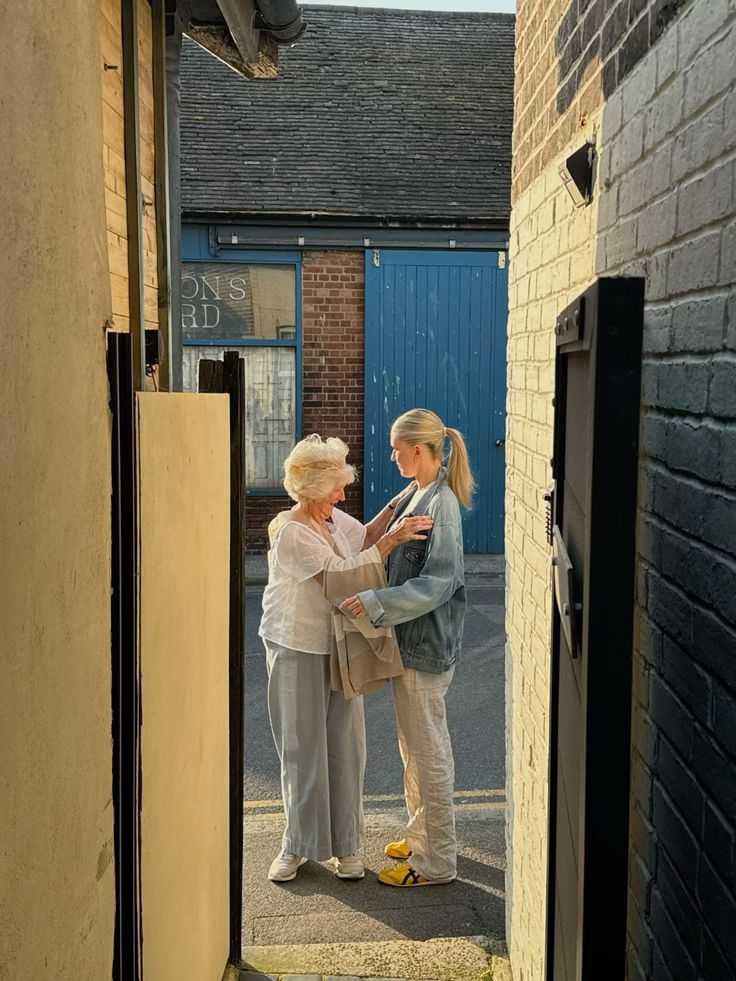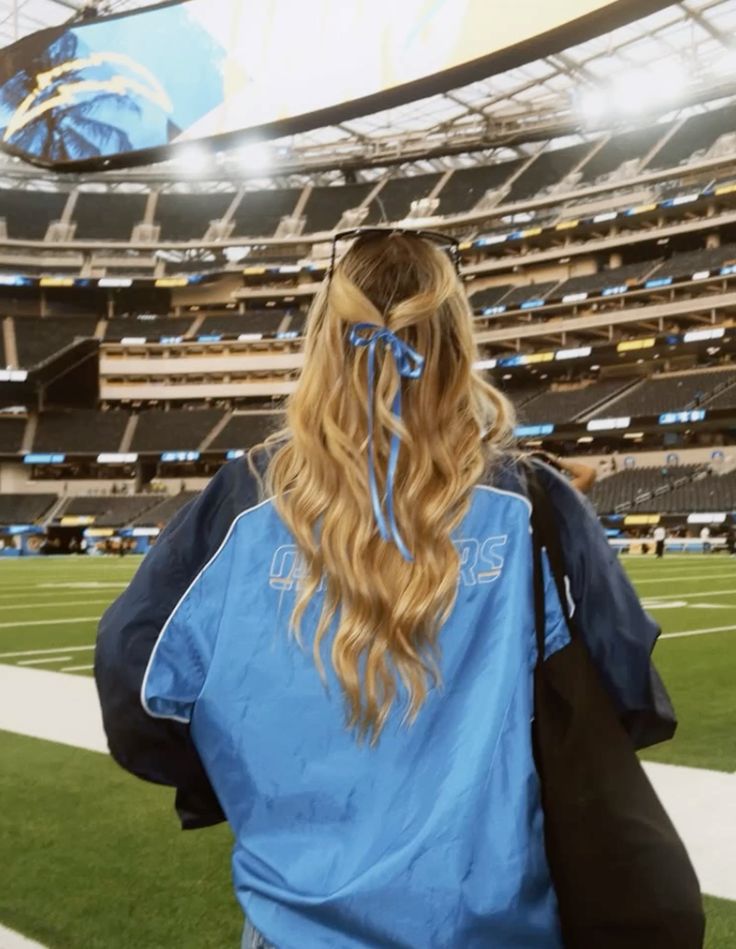Natalie Campbell lives an incredibly exciting life, spending many vacations, over the years, hiking, skiing and exploring all around America with her family.
All of this adventure came to a screeching halt as Natalie was about to start her senior year of high school. In the months before her final year, Natalie often felt severe chest pain but always brushed it off — something she says she gets from her dad. On a hiking trip in the Grand Canyon, Natalie was having trouble breathing and had frequent bursts of this chest pain.
“I was just having such a good time, and I was in the moment,” Natalie says. “I had been waiting for that trip for so many years, so I just looked past it.”
After her return, Natalie was in constant pain, yet was still trying to live a normal life.
“I would dread waking up in the morning having to sit up on my own,” Natalie says.
Just before the start of her senior year, Natalie says she was excited to go to field hockey tryouts and was even planning on becoming a captain of her team. The ordeal she endured at tryouts will be ingrained in her mind forever.
During a run, Natalie felt the same, familiar pain in her chest, but this time it was so debilitating that it literally stopped her in her tracks. Her mom brought her to her pediatrician and the doctor diagnosed her with asthma and gave her an inhaler. From this point on, the pain only got worse and worse until she had to be rushed to the hospital.
The Diagnosis
Natalie was brought in and given a battery of asthma tests, only to find out that she didn’t have asthma at all — what she had was much worse.
“I was sitting in the waiting room with my dad and eventually a ton of doctors started talking and I realized that something really bad was happening,” Natalie says.
She was soon told that only one of her lungs was functioning properly. Natalie was sent immediately to another hospital so that she could be rushed into surgery.
This ordeal would prove to be the biggest test of her strength and perseverance in her life up to that point. Upon arriving to the second hospital, Natalie was rushed into surgery. She laid on the operating table and was told that she had to remain awake through it all.
She reminded herself of her strength and what she had already dealt with leading up to this moment.
She says, “I was in the zone and I was like, ‘Whatever you have to do, just do it.’”
After surgery, Natalie stayed in the hospital for about a week and was attached to a chest tube chamber, which helped clean out her lung. Natalie was told the removal of the tube would be a simple, 3-second procedure.
The doctors came in and began to remove the tube, but it wouldn’t come out. What was supposed to be the easiest part of her recovery, turned into the most painful experience.
Natalie described it as horrible and intolerable. She says, “I can physically feel the pain if I think about it.”
Upon leaving the hospital, Natalie was told by many different doctors that her lung was back to normal and functioning properly, and that she would never experience lung issues again.
Distrust in Doctors
After her surgery, Natalie started losing weight rapidly. At her post-op appointment, she got on the scale and could not believe the number she saw. She went to her doctor and was told that she had to wait two weeks before they tested for anything, so that they could rule out that it wasn’t a virus, which would have passed in two weeks.
“I know my body and I knew that something was wrong,” Natalie says. “I knew this wasn’t normal and nobody listened to me.”
She had to see both a nutritionist and a psychiatrist so they could rule out the possibility that it could be an eating disorder. Both doctors told her that she needs to eat more.
“They were not compassionate or understanding of my situation,” Natalie says. “They kept making me feel like I had an eating disorder,” even though she had lost weight so rapidly — something that would not happen if she did have an eating disorder.
She then went to a gastrointestinal doctor for more testing.
“I was hoping something was wrong just so they could fix me.”
They said that her stomach was healthy and they didn’t have an explanation for the sudden weight loss.
She finally went to her pediatrician and was told that she had an infection that was eating at her intestines — something that is not extremely uncommon after an operation like hers.
The constant bouncing around to different doctors and never receiving the same diagnosis left Natalie feeling hopeless.
Round Two
About a month following Natalie’s first surgery, she felt the same severe chest pain that she was told she would never feel again. Her parents immediately brought her to the doctor and the nightmare all started again. She knew her lung had collapsed a second time.
None of the doctors she saw could tell her why this would have happened again, so she was eventually sent to the Chief of Pulmonary, who decided to put her through numerous tests.
“The fact that I even had to talk to him, I was like, ‘Shoot, they really don’t know what’s wrong with me,” Natalie says.
She went through some of the same tests she went through before: asthma tests, X-Rays, and a few new ones like a cystic fibrosis test in which she was put in an air-tight box with no oxygen.
“It was horrifying, but I just had to do it,” Natalie says. “I had no choice.”
All of these tests came back ‘negative’ for chronic conditions, so the Chief of Pulmonary recommended she get a surgery that would prevent her lung from collapsing again, but they decided to schedule it three months away. So, she was sent home with a collapsed lung.
“I left that day so scared,” Natalie recalls. “Nobody knows what’s wrong with me and nobody is helping me.”
After the few months Natalie spent trying to live a normal life, she had her second surgery.
“This surgery was a lot better than the first one,” Natalie says. “I was strong-minded and prepared. I had been through it all before.”
However, this was also much bigger and more serious. The recovery was longer and much harder. The doctors also informed her that based on the scar tissue on her lung, they believe that she had up to six collapsed lungs in the year leading up to her first surgery. Natalie had skied and hiked as if there was nothing wrong this entire time.
A Sibling’s Bond
Growing up, Natalie and her brother, Matt, did everything together, and their bond stayed just as strong even while they attended different colleges.
“We always talk about how we are so connected in such a different way than my relationship with other people in my family,” Natalie says about her and her brother. “We always think the same thoughts.”
Throughout the summer of 2019, Natalie finally felt that she was moving past her illness and living her life without fear.
“The memories of my lung history used to be vivid and I’d replay them in my head every day, living my life carefully and cautiously,” Natalie recalls. “Each day they get foggier, and my mind is more at ease.”
Unbeknownst to Natalie and her family, Matt was just beginning his own life-changing journey.
Matt was experiencing allergy symptoms during the summer of 2019, so he decided to consult an allergist. They found that his white blood cell count was very low, but told him not to worry about it being leukemia, despite the fact that in most cases, a low white blood cell count points directly to leukemia.
Matt was just about to begin his senior year at Ohio University while Natalie was about to begin her junior year at Penn State. Their parents planned to drive Natalie back to school, and although they were a bit hesitant because they were waiting for the results from Matt’s tests, they decided to go.
About halfway into the 8-hour drive, they received a call from her brother — he was sobbing.
When he got a call from his doctor about his diagnosis, the doctor told him that she thinks he has acute leukemia and needs to head to the hospital immediately to undergo more tests.
Natalie took this news with a grain of salt — she had been misdiagnosed time and time again, however, this time it was real.
“It was very weird timing,” Natalie says. “He was excited about what was to come after this year and he was excited to graduate with his friends. He had so much to look forward to.”
Natalie and Matt were in similar points in their lives when they received their diagnoses. They were each approaching a major milestone, when suddenly their lives seemed to stop.
“I truly believe that my situation mentally prepared all of us to expect the unexpected when it comes to health issues and not be in fear anymore,” Natalie says.
Matt is currently in treatment for his leukemia, and was unable to return to school for his senior year.
The Journey to Penn State
The day Natalie left the hospital after her second surgery, she got accepted to Penn State as a health policy and administration major in the College of Health and Human Development. All that she had been through, influenced her to want to run a hospital of her own one day.
“My story has inspired me to want to make a change,” Natalie says. “Even just starting with patient and doctor interactions. I’m obsessed with the fact that I can fix these kinks in the system. There doesn’t have to be mistrust with anyone else.”
What Natalie and her family have gone through in the past few years has completely solidified her choice to become an HPA major — she says that running a hospital is her biggest career goal.
Natalie and her family’s strength has been tested time and time again, but throughout everything, they have remained so connected. Together, they always manage to find the light at the end of a dark tunnel.
“A lot of people tell me that my family is a bunch of fighters, always so strong. But the truth is, it was the point of my lowest weakness that I️ gained my inner strength.”





